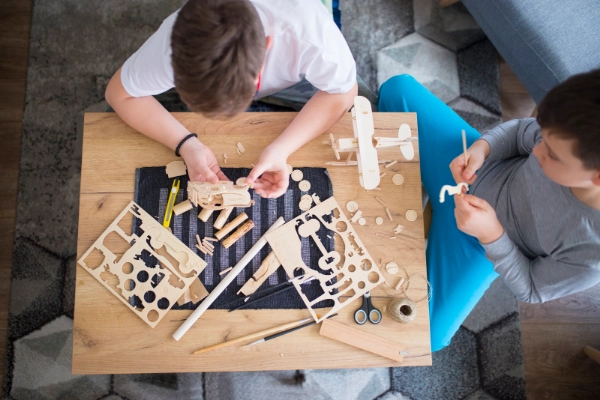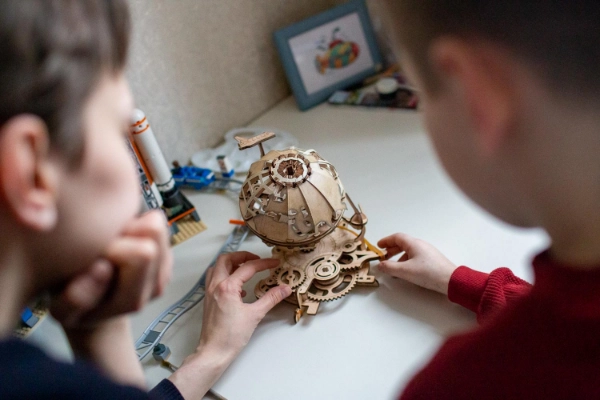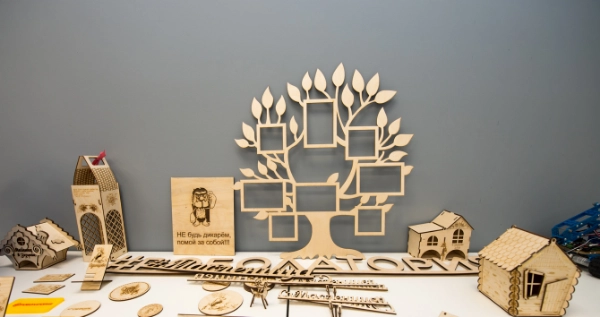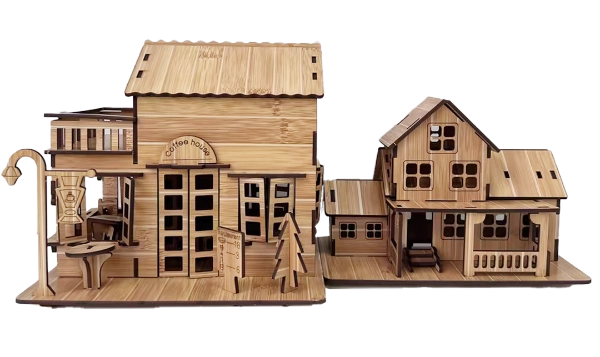Applications of CO2 Laser Cutting Machine in K12 Education: Impact on Learning and Creativity
CO2 laser cutting machines, a versatile and powerful tool traditionally used in industries such as manufacturing and design, are now entering the classroom to provide students with hands-on learning opportunities that foster creativity, critical thinking, and problem-solving skills. In this blog post, Good-Laser will share the various applications of CO2 laser cutting machine in K12 education and how they can enhance students' learning experience.
A CO2 laser cutting machine is a type of laser cutter that uses carbon dioxide (CO2) gas as a medium to produce a laser beam. The high-energy laser is capable of cutting, engraving, and marking a wide range of materials, including wood, acrylic, fabric, paper, and even metal. Its precision and ability to work with intricate designs make it an invaluable tool in many industries, from architecture and engineering to fashion and art.
In educational settings, CO2 laser cutting machines offer an innovative way to introduce students to the concepts of design, engineering, and manufacturing while promoting hands-on learning. The ability to quickly and accurately cut materials allows students to create tangible projects and prototypes, giving them a deeper understanding of how theoretical concepts translate into real-world applications.
Applications of CO2 Laser Cutting Machine in K12 Education
1. Enhancing STEM Education
One of the primary benefits of incorporating CO2 laser cutting machines into K12 education is the enhancement of STEM (Science, Technology, Engineering, and Mathematics) learning. With laser cutters, students can engage in projects that involve designing, prototyping, and constructing physical models, which brings abstract STEM concepts to life.
For example, students learning about geometric shapes and structures can design their own 2D and 3D models using software like AutoCAD or Tinkercad. The laser cutter can then bring these designs to life by cutting them from various materials. This hands-on approach helps students understand the practical applications of math and physics while developing valuable skills in design thinking and problem-solving.
2. Fostering Creativity and Innovation
CO2 laser cutting machines offer an excellent platform for fostering creativity in students. With the ability to work with a wide variety of materials and create intricate designs, students can explore their artistic side while learning about technology. This is particularly relevant in art and design classes, where students can create personalized artwork, jewelry, sculptures, or even fashion accessories.
The precise and intricate cuts that a CO2 laser cutter can achieve allow students to experiment with detailed and innovative designs. Whether it' s engraving a name or logo on a piece of wood, cutting out shapes for a sculpture, or creating layered paper designs for a 3D art project, the possibilities are endless. Students can visualize their creative ideas and see them come to life, which can be a powerful motivator for continued exploration and learning.
3. Project-Based Learning and Collaboration
Project-based learning (PBL) is a teaching method that encourages students to work together to solve real-world problems. CO2 laser cutting machines are a valuable tool for this type of learning, as they allow students to collaborate on designing, building, and refining projects. Whether it' s creating a scale model of a building in a social studies class or designing a functional mechanical device in a technology class, laser cutters enable students to realize their ideas in a way that would be difficult with traditional tools.
For example, in a collaborative STEM project, students could design and cut out pieces for a Rube Goldberg machine, or in a history class, they might recreate an ancient artifact or architectural structure. The use of laser cutting fosters teamwork and helps students understand the iterative nature of design - adjusting, testing, and refining their ideas to achieve a final product.

4. Introducing Students to Digital Fabrication and Industry-Relevant Skills
As the world becomes increasingly reliant on digital fabrication technologies, it' s essential to equip students with skills that will prepare them for future careers in design, engineering, and manufacturing. CO2 laser cutting machines are an excellent way to introduce students to digital fabrication, a field that combines traditional manufacturing techniques with digital tools and processes.
By working with a laser cutter, students gain experience with design software, learn about material properties, and practice precision cutting techniques. These skills are directly applicable to a variety of industries, from architecture and product design to robotics and engineering. In addition, students can gain an understanding of sustainable design practices by using eco-friendly materials and learning about waste reduction in the manufacturing process.
5. Encouraging Environmental Awareness and Sustainability
Another important application of CO2 laser cutting machines in education is promoting environmental awareness and sustainability. Laser cutters can help students better understand the environmental impact of the materials they use and encourage them to make more sustainable choices.
For example, students can explore the use of biodegradable or recycled materials in their projects, experimenting with alternatives to traditional plastics and metals. Additionally, the precision of laser cutting reduces material waste, allowing students to create more efficient designs and make the most of their resources. This can foster an understanding of the importance of sustainability in both design and manufacturing processes.
6. Engaging Students with Special Needs
CO2 laser cutting machines can also play a significant role in engaging students with special needs. The machine' s ability to create customized learning tools, such as tactile learning aids, visual aids, and accessible models, can enhance educational experiences for students with visual, auditory, or motor impairments.
For example, students with visual impairments can benefit from laser-engraved tactile graphics that help them navigate mathematical concepts or historical maps. Laser cutting can also be used to create physical models for students with learning disabilities, offering them a more hands-on, tangible approach to learning that may better suit their needs.

Conclusion
The applications of CO2 laser cutting machines in K12 education are vast and varied, providing opportunities for students to engage with technology in creative and meaningful ways. From enhancing STEM education and fostering creativity to encouraging collaboration and sustainability, these machines have the potential to transform the learning experience. By integrating CO2 laser cutting into classrooms, educators can prepare students for the future by equipping them with the skills, knowledge, and mindset to thrive in an increasingly digital and innovation-driven world.




